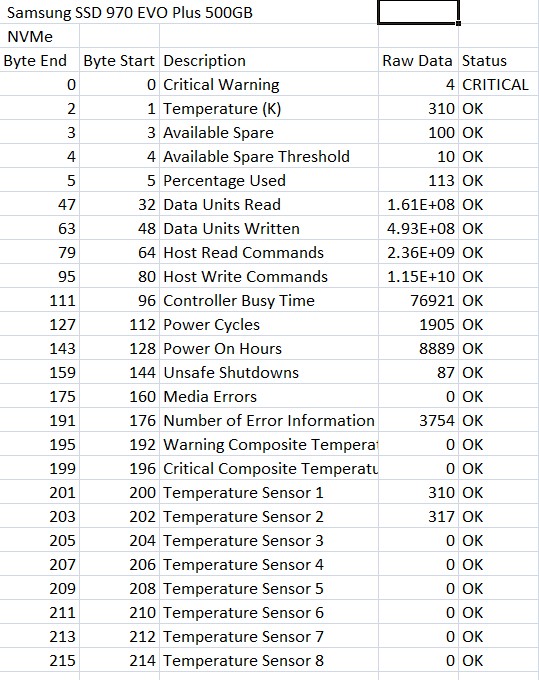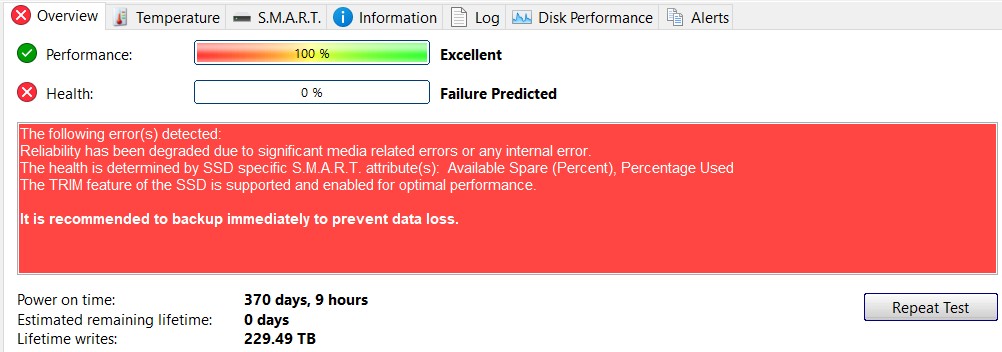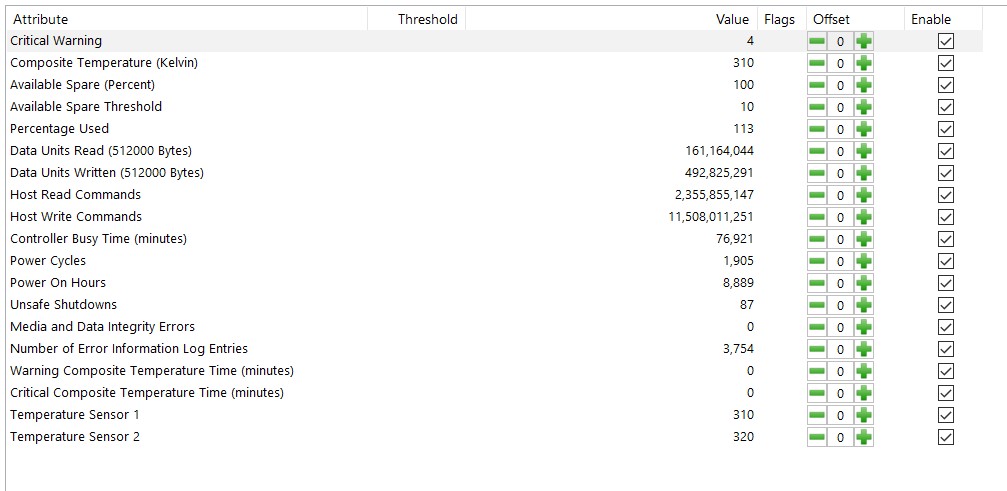Samsung Magician is telling me that my Samsung 970 Evo Plus 500GB M.2 SSD is at "critical" status, and within the detail it strongly suggests a flash memory failure. It's written 230TB, the disk is rated for 300TB.
What I'm wondering is how 230TB of data has been written to this disk in 3 years. It run Windows 10 on a 150GB partition, and has a 350GB data partition. The data partition isn't used much:
- I process maybe 5GB of photos per month
- My local Dropbox cache is 5GB, I change maybe a few MB a week
- Kodi database (not used much)
Plus I write the odd random thing to it. In three years I guess I've written max 10TB to the data partition. That suggests to me that the OS or software is writing a heck of a lot of data to the OS partition.
My old 840 pro SATA SSD that I use as a temp drive / cache for Windows / Google / Firefox / Photoshop has 10TBW and it's a few years older.
When I look at disk activity, most of the time what I see at the top of the list is:
- Chrome user data (even though I have Chrome configured to write the cache to a different disk)
- Windows logs - e.g. c:\$LogFile (NTFS logs) and c:\$MFT (NTFS master file table) and c:\$Bitmap (NTFS free space map). I know generally what these are, but I'm surprised there's so much being written to them given the computer is mostly just running a web browser.
- Windows writing to log files in the c:\windows directory such as c:\windows\system32\config\software.log1
- Screenshot below (ignore Photoshop that was for the screenshot)
Any thoughts? Why is Windows / Chrome writing so much to the SSD? Is this normal - how many terabytes do most people's OS drive have and how old are they?
Is there anything that can / should be done to reduce disk writes? The new SSD I've purchased is meant to be significantly more durable with a warranty for 2000TBW.










